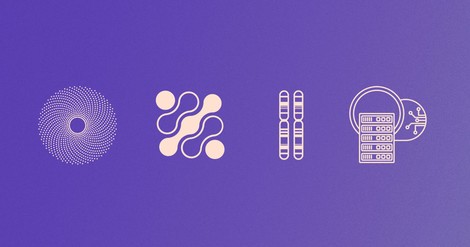Your podcast discovery platform
Curious minds select the most fascinating podcasts from around the world. Discover hand-piqd audio recommendations on your favorite topics.

Six Ways DNA Sequencing Is Changing The World
This must-read article raises six of the ways increased access and use of DNA sequencing is transforming the present:
By creating data sets: Genome-wide association studies (GWAS) are studies involving thousands of people. They link personal traits with DNA, and develop an understanding of what makes you you. They can help us understand how environment may combine with genetics to give rise to specific traits.
Through polygenic scores (PGS): PGS is an algorithm that adds up multiple variants of your DNA. The process is a new way of determining how likely it is for a person to develop certain conditions, from baldness to disease.
As a new way of studying history: Ancient genomics, studying DNA from ancient humans, is a novel way of learning about our past. Previously, scientists relied on artefacts such as pottery or garbage heaps to learn about life in prehistoric times. The study of ancient DNA can help us identify migration patterns, hence helping us understand how languages and technology may have passed from one culture to another.
Through early cancer detection: Cancer is a complex disease and early detection can improve a patient’s chance of survival significantly – as much as five to ten times. Through a blood sample, researchers are able to sequence the circulating DNA and trace cancerous cells back to their sources.
By helping to fight global warming: DNA can help create new, environmentally friendly sources of energy. Many organisms can actually produce hydrocarbons capable of storing a similar amount of energy as oil—we just don’t know how to use them yet.
Lastly, DNA can be used for storing data. DNA is a remarkably resilient molecule, and under the right storage conditions it can remain uncorrupted for many thousands of years.

good piq, hannes! but it clearly is an article that wants to push the use of DNA for various purposes and, although it denotes current limitations, it does not discuss the individual topics critically. to give an example: in the 6th section (DNA as information storage), the article points to the capacity to store huge amounts of data in small volumes for extended periods. what isn't mentioned at all is the fact that the recovery of this information crucially depends on present-day sequencing technology, which is efficient, comparably cheap but utterly hi-tech. generations in the future would need access to this technology to make any sense of a kilogram of DNA. in contrast, we can still read a good deal of what informations the mesopotamians thought worthwhile to keep because they used lo-tech materials: cuneiform scripting on clay tablets (see here: http://schaechter.asmb...).